Top 10 Most Expensive Wood in the World (Type, Color, Price)
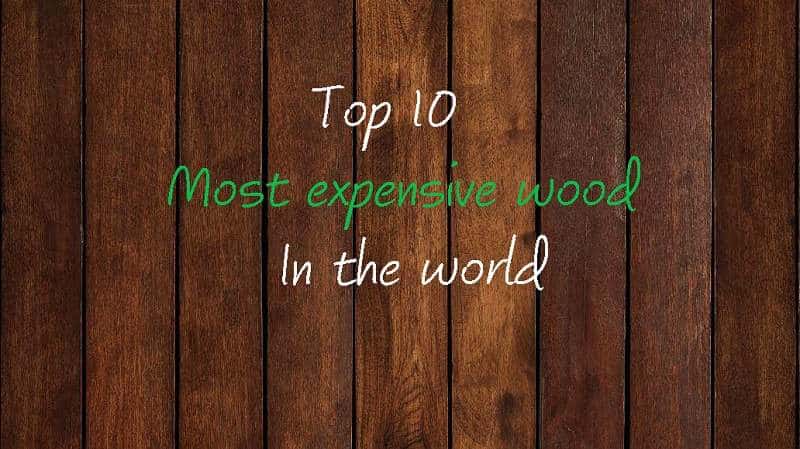
Let’s take a look at the most expensive wood and the rarest wood on the market.
The most expensive wood in the world would set you back several thousands of dollars, and today, we’re going to have a look at the 10 most expensive wood in the world. We’ll tell you what’s the most expensive wood, where it comes from, how durable it is, and what you can use it for.
In humanity’s early days, we’ve relied on nature to provide us with the precious materials needed to build our shelters and other important structures. I think we can all agree that wood is the most important material out there, as it’s been used by countless generations throughout the years in all four corners of the world. Wood has many different uses apart from home building and furniture. It can be used to create paper, and many people still rely on it as their main energy and heat source.
While our ancestors had to rely on the wood that they found locally, these days we use all sorts of wood types with various hardness levels, different colors, and different textures. That being said, some species of wood are definitely more expensive than others, and these high prices are often justified by rarity, import costs, color, and overall reliability.
10. Bocote Wood ($8 to $11/Board Foot).
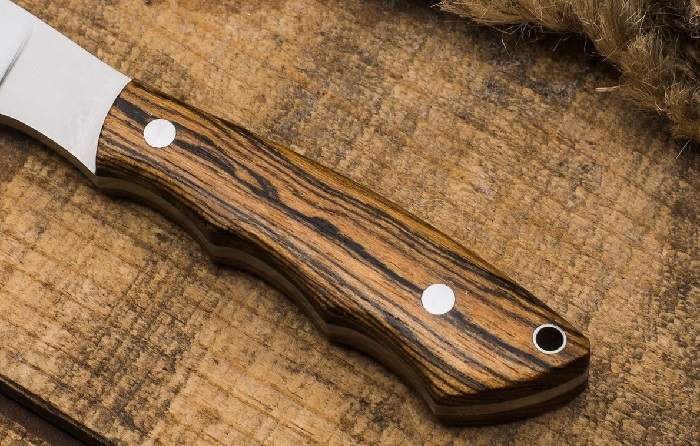
Bocote is one of the more affordable wood types on our list, but it’s also one of the most beautiful and easy to work with. Natively from Central America, Mexico, and the West Indies, Bocote has numerous grain patterns that range from wild to completely straight. As far as color is concerned, it also ranges from golden yellow to tan or golden brown. Boasting a medium texture, this is a durable wood with low flexibility.
Bocote is mainly used for furniture, cabinetry, veneer, pool cues, pens, and knife handles. One of its main advantages is that it polishes well with polyurethane or wax. It also features a pleasant natural gloss, which allows it to stand out among its peers. Price-wise, Bocote costs somewhere between $8 to $11 per board foot, which is relatively affordable in this day and age.
9. Holly ($34 – $43/Board Foot).

Holly lumber is generally not available for commercial sale, but when it does surface it is usually available in small quantities. Also known as American Holly, this wood is found in the Eastern part of the United States, and it impresses with a uniform pale white color without any grain patterns. One particular concern is that Holly often incorporates knots, which can dramatically reduce the usability of the wood portion. Moreover, if it’s not dried quickly, it can become affected by a bluish/gray fungal stain.
Holly is rated non-durable and perishable, and it can sometimes become ruined by insects. Definitely one of the most pretentious wood types out there, its uses include piano keys, inlays, furniture, handles, and turned objects. Moreover, this wood is often used for ornamental purposes, particularly since it flaunts a medium strength for a hardwood.
8. Ziricote Wood ($60/Board Foot).
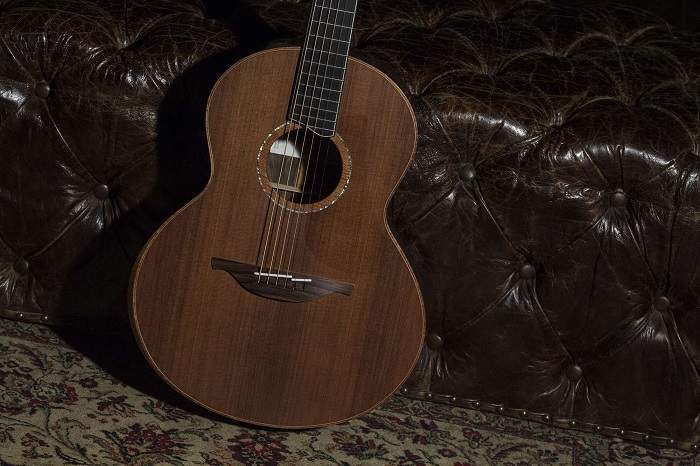
Fortunately, Ziricote is not listed in the CITES Appendices or on the IUCN Red List of Threatened Species, but that doesn’t mean that it’s not pricey. Native to Central America and Mexico, Ziricote can cost up to $60 per board foot, and it boasts an average dry weight of 50 lbs/ft. Its colorway ranges from medium to dark brown, and it can sometimes have a beautiful green or purple shade. Spider webbing is also present sometimes in Ziricote, and those particular wood types usually fetch a higher price.
It’s also worth noting that Ziricote is reportedly naturally resistant to decay, which makes it ideal for furniture, cabinetry, gunstocks, and musical instruments such as guitars. Alongside Brazilian Rosewood, Ziricote is pretty much the only wood in the world with spider-webbing, and this makes it quite sought-after in the woodworking world.
7. Koa Wood ($62/Board Foot).
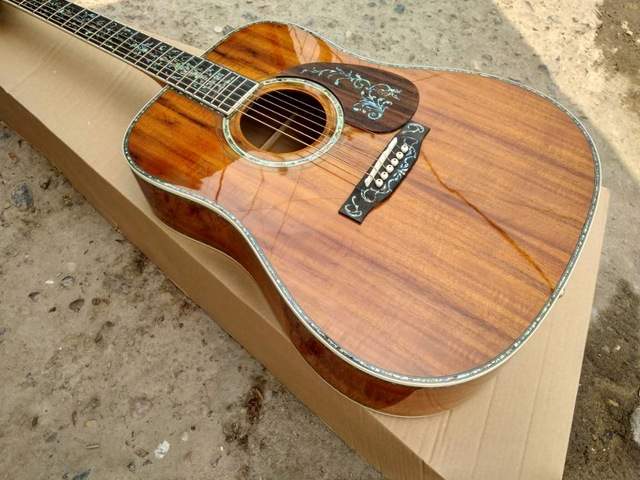
Also known widely as Hawaiian Koa, Koa is a wood that is native to Hawaii, and it looks quite similar to mahogany. Koa usually sports a medium golden or reddish brown color, but we’ve also seen boards with ribbon-like streaks of color. When it comes to durability, this isn’t the most resilient wood in the world when it comes to rot, and termites can also damage it greatly if they get a hold of it.
That being said, Koa is still one of the world’s most expensive species of wood, as it retails for $62 per board foot. It doesn’t have any characteristic odor, and it is widely regarded as Hawaii’s most beautiful and useful hardwood. However, since most Koa forests have been cleared for grazing pastures, this wood is becoming more and more difficult to come by. The issue is worsened by the vulnerability of young Koa seedlings to grazing animals, which means that most trees don’t have the chance to mature anymore.
Common uses for Koa wood involve guitars and ukuleles, furniture, veneer, cabinetry, and bowls.
6. Cocobolo Wood (Up to $65/Board Foot).
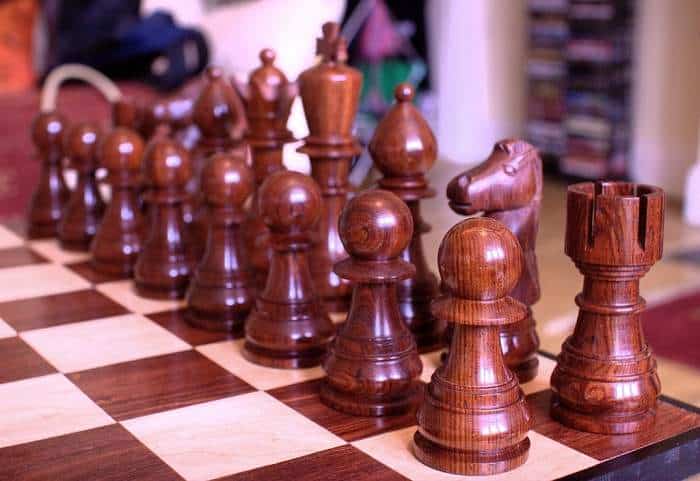
Cocobolo is a highly appreciated tropical hardwood that is obtained from trees growing in Central America. Actually, today’s industry only uses the heartwood of cocobolo, which features an orange or reddish-brown shade complemented by dark irregular traces that run through the wood. Interestingly enough, the heartwood changes its color after being cut.
Main uses for cocobolo include knife handles, gun grips, or chess pieces. That’s because this wood is quite resilient to repeated handling, and it can also be polished nicely to an almost glassy finish. We’ve also seen jewelry boxes made out of cocobolo, as well as bowls, pipes, desktops, pens, and brushbacks. Moreover, due to its density and hardness, this wood is famous for its clear musical tone.
Musical instruments made out of cocobolo include guitars, bass guitars, flutes, clarinets, and bagpipes. As one of the more exotic woods out there, this one costs somewhere between $50 to $65 per board foot.
5. Macassar Ebony ($65/Board Foot).
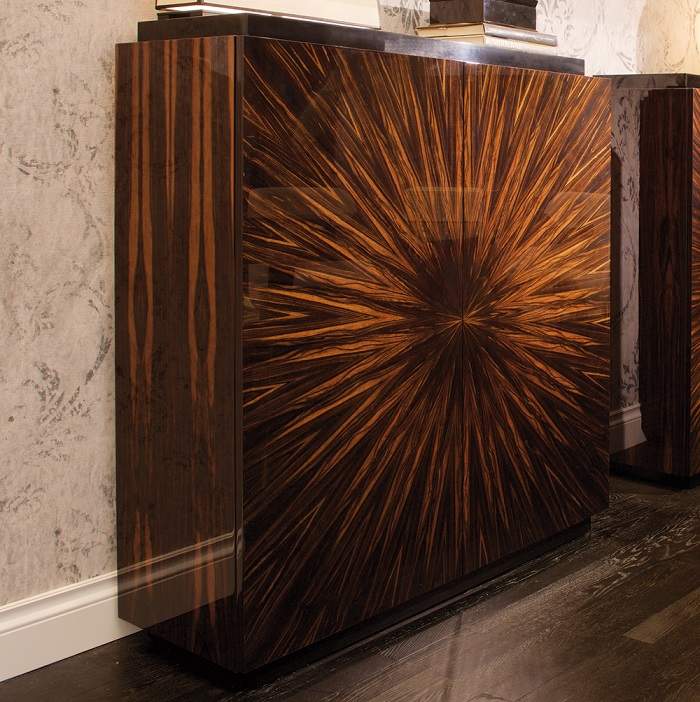
Also known as Striped Ebony, Macassar Ebony hails all the way from Southeast Asia, and it is a very expensive but durable wood. It doesn’t handle insect attacks very well, though, so keep that in mind if you want to use it for an outdoor project. The heartwood of Macassar Ebony features a striking striped appearance, while the body is generally yellow to reddish brown with dark brown stripes.
Because of its high density, this wood is generally difficult to work with, and it can also split quite easily during the drying process. Macassar Ebony is, however, an ideal wood for turned objects. The most common uses for it include high-end cabinetry, pool cues, musical instruments, and veneer. As one of the priciest wood species in the world, this ebony is also one of the rarest wood, as it is currently a part of the IUCN Red List.
4. Brazilian Rosewood ($70/Board Foot).
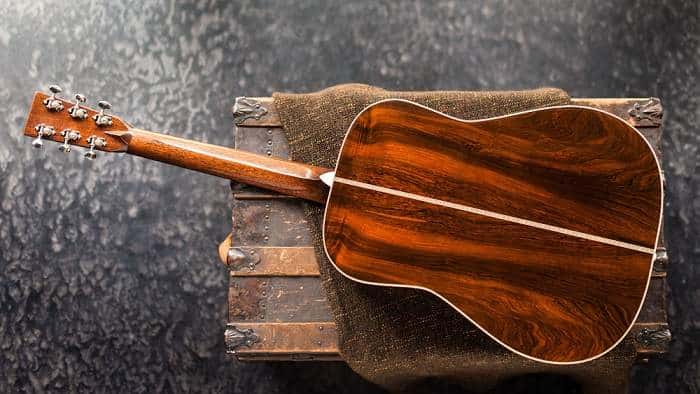
Brazilian Rosewood goes by many names, including Bahia rosewood, Jacarandá-da Bahia, Pianowood, Caviúna, Graúna or Jacarandá-Una, but its scientific name is actually Dalbergia Nigra. This is a very hard and heavy wood that stands out thanks to its various colorways. These range from brick red to different brownish shades, and some species can even boast a near-black appearance.
As one of the most expensive wood in the world, Brazilian Rosewood is particularly prized for its unique “spider webbing” or black “landscape grain,” which is basically a veiny black coloration. Furthermore, Brazilian Rosewood flaunts a substantial resonance, as it emits a bright metallic ring when struck. This type of wood first made its appearance on the European market a couple of hundred years ago, and it only grew in popularity ever since.
At the time of writing, Dalbergia Nnigra’s conservation status is Vulnerable, but we do hope that this will change in future years. As for pricing, you can expect to pay about $70 per board foot of Brazilian Rosewood, which is definitely not cheap by modern standards.
3. Pink Ivory ($80/Board Foot).
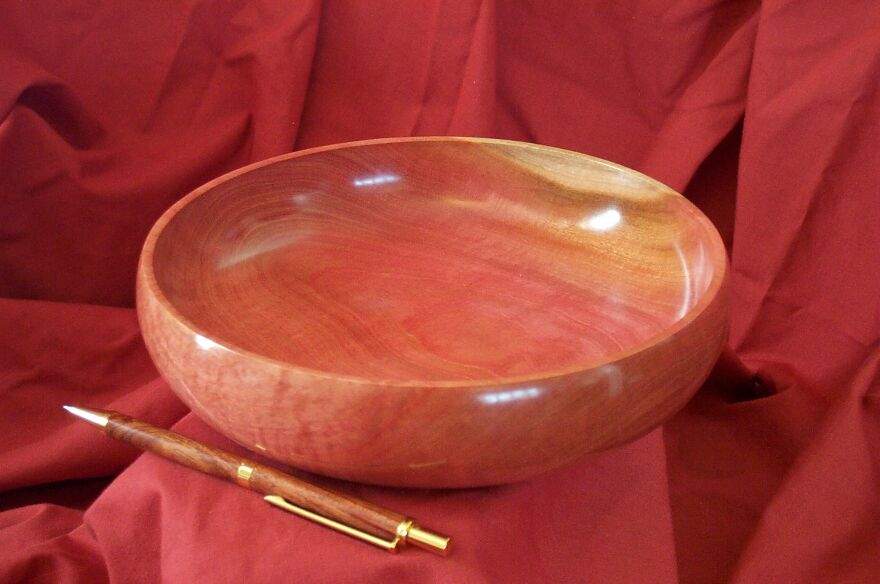
One of the most pleasant-looking woods on our list is Pink Ivory, which is native to Southern Africa. Despite its name, Pink Ivory ranges in color from a pale brownish pink hue to a deep red or vibrant neon pink. Obviously, the most valuable Pink Ivory is the one that’s actually bright pink, and its price tag can go up to $80 per board foot, or perhaps even more.
Even though it’s not generally used for construction or other important structural work, this wood is incredibly resistant to natural decay, and it can stand up to the elements nicely over the years. Moreover, despite its dandy appearance, Pink Ivory gives off a rather unpleasant odor when worked with. Common uses comprise knife handles, pool cues, carving, chess pieces, veneer, and inlay.
2. Sandalwood ($70 to $250 per Kilogram).
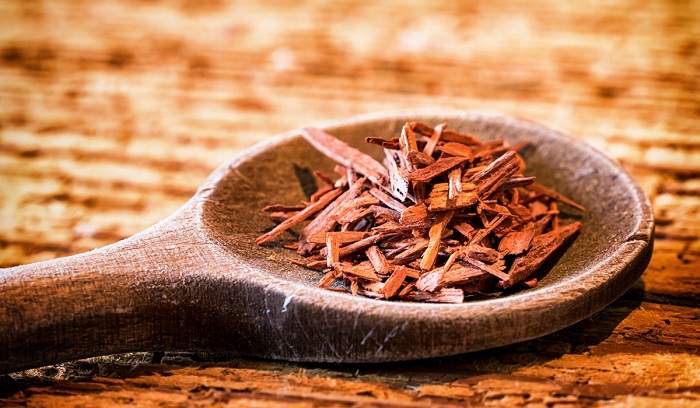
Sandalwood is a rather unconventional type of wood, mainly because it’s often valued more for its aromatic properties. Sandalwood belongs to the genus Santalum, and it is able to retain its fragrance for decades, which makes it incredibly sought after and expensive. Actually, Sandalwood is the second most expensive wood in the world right now.
Sandalwood oil is another byproduct of this outstanding tree, and the oil also produces the same distinctive fragrance. Unfortunately, the tree grows quite slowly, and it has been overharvested over the past centuries. Sandalwood is actively used in rituals by many religions, including Sufism, Buddhism, Hinduism, Jainism, Zoroastrianism, and various other Korean, Chinese and Japanese faiths.
Our research shows that you can currently buy one kilogram or 2.2 pounds of sandalwood for anything between $70 to $250.
1. African Blackwood ($100/Board Foot).
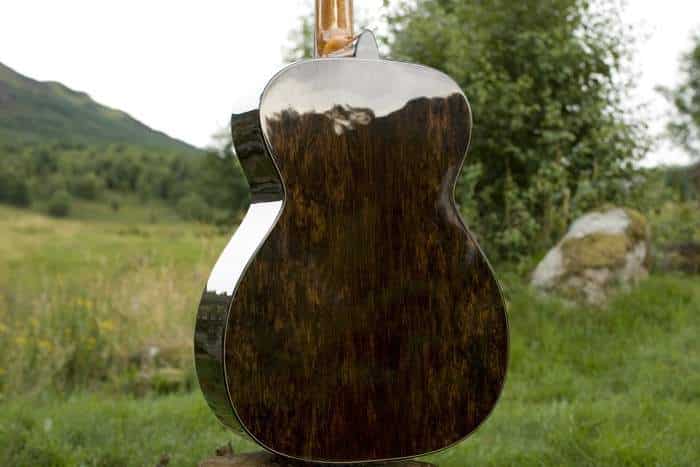
African Blackwood has been topping the charts of the world’s most expensive wood for quite a few years now. This type of wood made the news even back in 2009 when its rarity skyrocketed its price tag. These days, you can find African Blackwood for $90 to $100 per board foot, which means that 1 cubic meter of it could cost as much as $30,000. It’s true that African Blackwood is not an endangered species just yet, but since the tree requires 60 years to mature and smugglers transport it illegally to countries such as Kenya, supply is becoming increasingly scarce.
Also known as Mpingo in Tanzania, this wood also grew in southern Ethiopia and Kenya at some point. However, it can only be found in Tanzania and northern Mozambique these days. It is mostly used for woodwind instruments such as clarinets, and it boasts a beautiful, almost completely black appearance. However, it’s worth noting that this tree is no longer considered ebony, as this name is now completely reserved to species of the genus Diospyros.
Still, history places African Blackwood as the original ebony, as this wood was imported and used in Ancient Egypt thousands of years ago. Another advantage of this type of wood is that it is one of the hardest and densest in the world.

I read in the other website that price of Agar wood can cost about $20,000 per kilogram. Ebony wood can cost around $10,000 per kilogram
Thank you for your comment! Wood price is usually measured in board feet instead of kilograms or pounds. If we are to convert the pound-feet pricing to kilograms, the results would coincide with what you read on other websites. We didn’t include Agar in our list because we didn’t find any reliable pricing information on this particular wood. We sourced the prices for these woods from actual retailers in order to ensure the accuracy of the article.
What is most expensive Indian Blackwood or African Blackwood